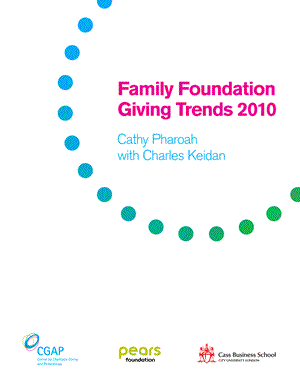Studies call for new approach to grantmaking
Only a quarter of UK charities are applying for funding for their core costs, according to the Garfield Weston Foundation.
The Foundation announced the finding, based on the charities that have applied to it over the last five years, along with the winners of its recent Weston Charity Awards, which give small charities across the North of England and the Midlands unrestricted funding and strategic support.
Sixteen charities working in the areas of youth, welfare and community won the awards, including the Apex Charitable Trust, Disability Action Yorkshire, and Key Changes in Sheffield. The winners receive funding as well as access to a team of senior business leaders through Pilotlight.
Philippa Charles, director of Garfield Weston Foundation said:
“Supporting the running costs of a charity is crucial if we are to avoid charities experiencing a slow decline. Charities tell us they are too afraid to ask for this sort of funding for fear of being turned down. Having supported thousands of charities over the last 60 years, we know how important it is that charities feel able to apply for this sort of funding so that they can continue to deliver great services.”
A US study has also highlighted the need for charities to apply for enough money to cover all costs. The Pay-What-It-Takes Philanthropy study, conducted by The Bridgespan Group and published in the Stanford Social Innovation Review, addresses the issue of funders providing full financial support for programmes and services, but not for overhead costs, and calls for a new grantmaking approach that provides enough money for nonprofits to pay for all their operations, rather than solely programmes and services.
The Bridgespan Group examined the financial records of 20 well-known, high-performing US nonprofits to determine their actual indirect costs: those not attributed to a specific programme or service.
It discovered that indirect costs make up a much larger percentage of a nonprofit’s total costs than is widely understood, with different segments of the nonprofit sector having different indirect cost structures. Of the nonprofits surveyed, indirect costs made up between 21 per cent and 89 per cent of total costs, with the median indirect cost rate for all 20 nonprofits at 40 percent. This is nearly three times the 15 per cent overhead rate that most foundations provide, according to the study.
The study suggests that flat rate reimbursement for indirect costs is conceptually wrong because it fails to take into account the differences by nonprofit segment, with the typical reimbursement rate of 15 per cent failing to represent the actual indirect costs it takes to run any of the nonprofits analysed.
It pinpoints the need for grantmakers to realise that different types of nonprofits have different cost structures, and suggests building a framework for a new approach to philanthropic grantmaking that shifts from an emphasis on what it takes to fund a programme to what it takes to achieve impact.
Some funders are already rethinking their approach, according to the study, but to make the pay-what-it-takes approach work, nonprofits need to be clear about their operational needs and how those needs relate to desired impact. The study suggests the introduction of benchmarks for indirect costs to help lay the groundwork for identifying best practices, and setting target indirect cost expenditure levels for most nonprofits, which could create a basis for a shared understanding between nonprofits and foundations of a new approach to grantmaking that accounts for nonprofits’ real cost.
More can be read here: http://ssir.org/articles/entry/pay_what_it_takes_philanthropy.
Advertisement




